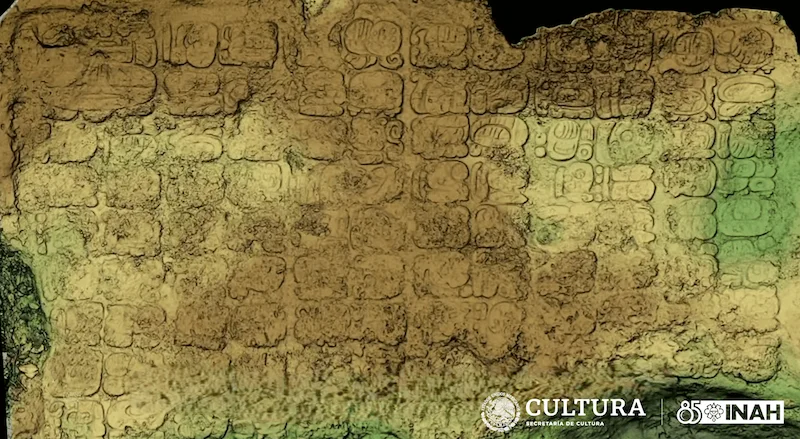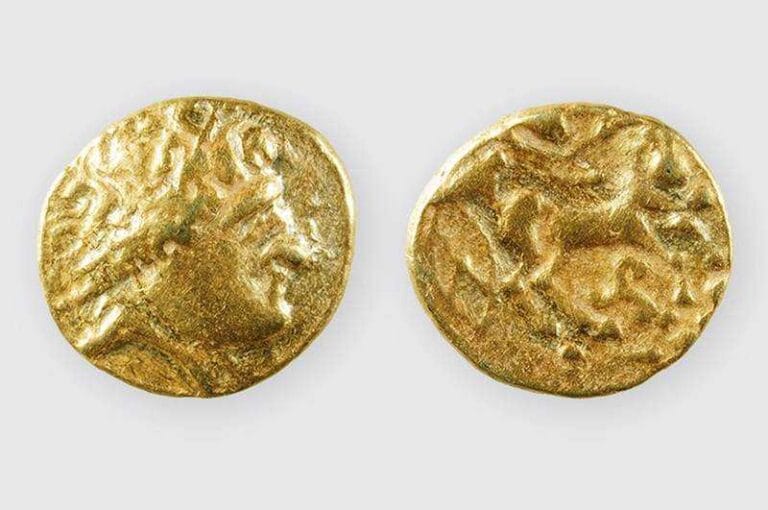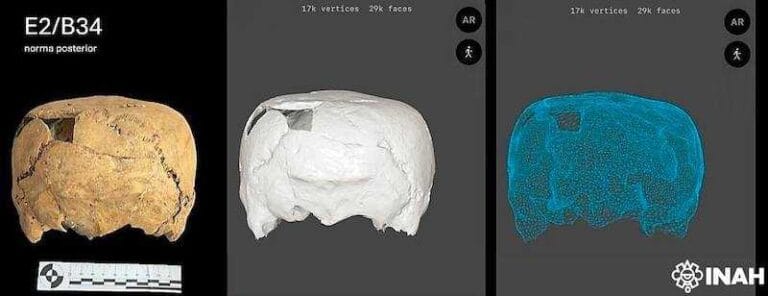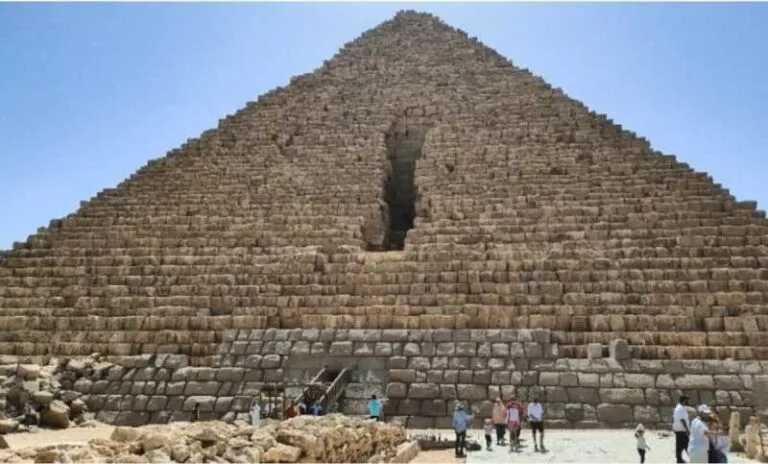Stone panel with more than 100 Mayan glyphs discovered

Excavations have revealed a stone panel with 123 Mayan glyphs in a sacred pool next to the pyramid of Nohoch Mul in Cobá, Quintana Roo. The pyramid, 42 meters high, is one of the most notable landmarks in the archaeological zone of Cobá, an ancient Mayan city-state.
The panel, discovered about 160 meters from Nohoch Mul, features an extensive L-shaped inscription measuring just over 11 square meters. Initial studies of the epigraphy suggest that the text refers to the founding date of the village Keh Witz Nal, translated as “Deer Mountain”, dated May 12, 569 AD. In addition, the name of a ruler, K’awiil Ch’ak Chéen, has been identified for the first time, filling a gap in the dynastic sequence of Koba. This confirms that many rulers of this city, including 14 identified and three women, adopted the name of the god K’awil, associated with local protective deities.
According to the INAH’s director general, Diego Prieto Hernández, “this allows us to corroborate that many of the rulers of this city-state – 14 have been identified, three of them women, one of whom ruled for four decades – adopted the name of the god K’awil, which gave them their attributes as protective deities of the place.”
The panel links historical events to a mythology that describes the founding tutelary gods of Cobá. Prieto Hernández pointed out that the writing on the rock panel “alludes to a group of tutelary gods who founded Cobá, such as Bolón Tz’akab Ajaw, ‘Lord of the countless generations’, responsible for the foundations of the maize and cocoa dynasties.”

After the discovery, the researchers began a meticulous process to protect and restore the panel. This included removing earth, salts and weeds, as well as applying lime mortar to reinforce the rock. High-precision three-dimensional models of the glyphic text were created to enable further study and eventual complete decipherment. “A high-precision engraving of the glyphic text was made to create three-dimensional models that will allow more in-depth epigraphic studies in order to obtain its complete decipherment,” explained Prieto Hernández.

The recovery of this panel is part of the Archaeological Zone Improvement Program (Promeza), which is also working on other sites along the east coast of Quintana Roo. At El Meco, near Cancun and Isla Mujeres, research and conservation have been completed, with signage and infrastructure in progress. In Tulum, work is advanced and the installation of signage will be completed soon.
The inauguration of the Museum of the East Coast, which will exhibit the pre-Hispanic evolution of the region’s Mayan cities, is scheduled for September 2024. Promeza is also working in Muyil, where 11 buildings have been unveiled, and in Xel-Há, where a new Visitor Center has been built. In Sian Ka’an, improvements include the installation of signage and the creation of interpretive trails. In the Paamul II circuit, efforts are being made to preserve the area’s natural and archaeological wealth while developing Section 5 of the Mayan Train, with solutions planned to protect local archaeological zones and caves.
These initiatives reflect an ongoing commitment to preserving and enhancing the Mayan legacy, providing new perspectives on the region’s rich history and culture.






